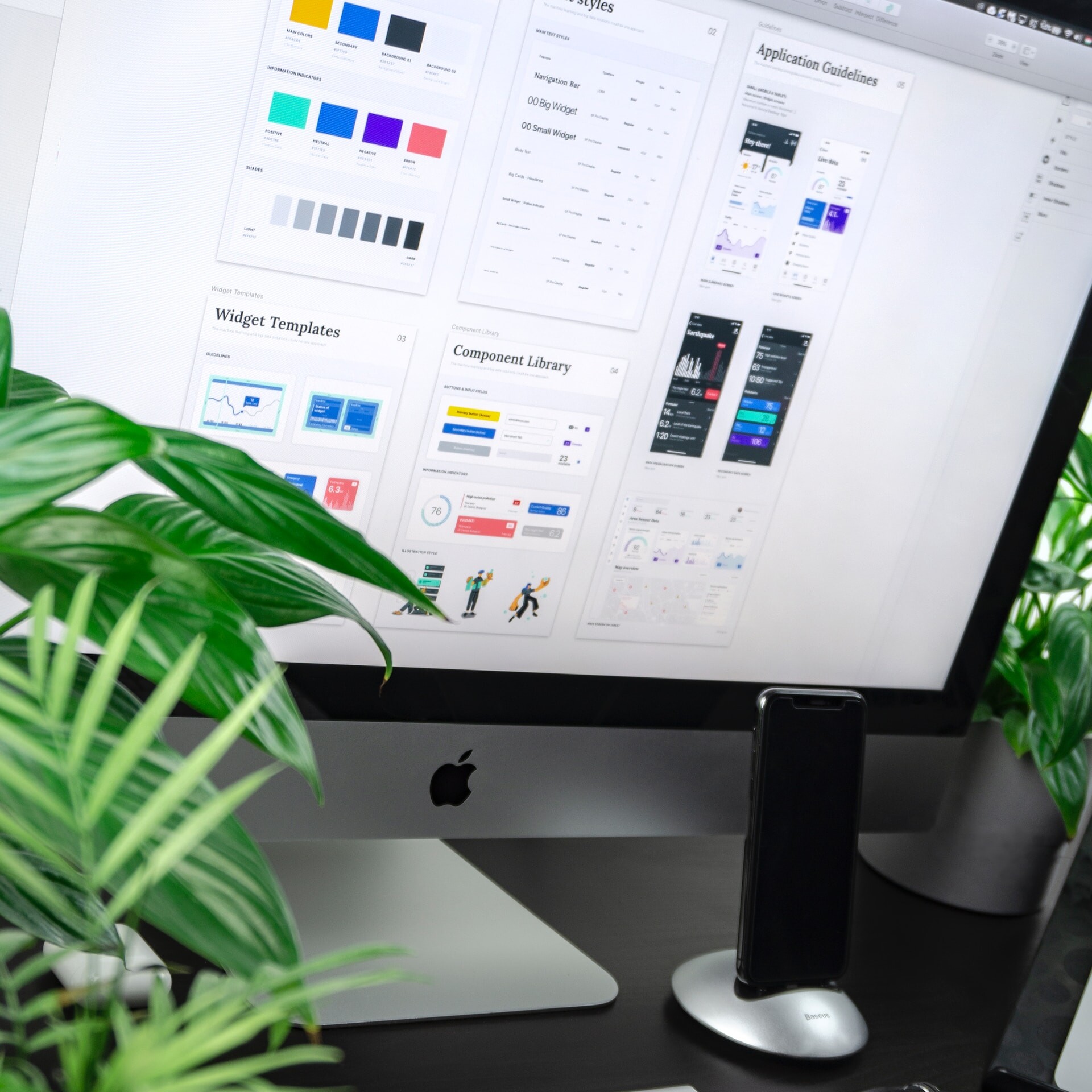Navigating the Design of Input Controls in UI
Input controls are the bridges between the user and the system, facilitating interactions like form submissions, data entries, and settings adjustments. The effectiveness of these controls directly impacts the overall user experience, making their design a critical focus in UI development.

The connection between input controls and UI signifiers in web design is a crucial one, intertwining functionality with intuitive guidance. Input controls — such as buttons, text fields, and sliders — are the tools that users interact with to input data or make selections. UI signifiers, on the other hand, are visual cues like icons, colors, and shapes that guide users towards these controls and indicate their functions. The effectiveness of this relationship hinges on how well the signifiers can direct users to the correct input controls and communicate their purpose without necessitating explicit instructions. For instance, a magnifying glass icon not only signifies a search function but also intuitively leads users to a search bar. This harmonious blend of input controls with clear, intuitive UI signifiers is fundamental in creating a seamless user experience, where interaction with the website or application feels natural and effortless.

Common Design Hurdles in Input Controls
Designing input controls for a frictionless user experience is a nuanced art. The primary goal is to enable users to interact with the system effortlessly, with minimal confusion or delay. This involves creating intuitive interfaces where the controls are self-explanatory and users can perform actions almost instinctively. A significant aspect of achieving this frictionless experience lies in the careful consideration of the layout, spacing, and overall design of these controls. Each element should guide the user naturally to the next step, ensuring a smooth flow of actions. For instance, the placement of a submit button in a form, its size, and its visibility all play a crucial role in facilitating an easy and efficient user journey. Moreover, the responsiveness of these controls – how they react to user inputs – further defines the ease with which users can achieve their objectives, be it entering information, making selections, or navigating through the site or application.
Colors and consistency are pivotal in the design of input controls, significantly impacting user perception and interaction. The choice of colors not only affects the aesthetic appeal but also the usability and accessibility of the controls. For example, using contrasting colors can make buttons and actions stand out, guiding the user’s attention to essential functions. Similarly, the use of consistent color schemes across all input controls helps in creating a cohesive and harmonious interface, where users can quickly identify similar actions or information types. Consistency in design extends beyond colors, encompassing the shapes, sizes, and styles of controls. When users encounter a uniform design language throughout the interface, it reduces their cognitive load, making the navigation and interaction process more intuitive and less prone to errors. This consistency in design elements fosters a sense of familiarity and predictability, which is crucial in building user confidence and ensuring a seamless experience.
Having established the importance of a frictionless experience and the role of colors and consistency in the design of input controls, let’s delve into some of the common design hurdles that UI designers encounter and explore strategies for effectively navigating these challenges:
- Clarity and Visibility: One of the primary challenges is ensuring that input controls are clearly visible and understandable. Designers must balance aesthetic appeal with functional clarity to avoid user confusion.
- Consistency: Maintaining a consistent design for similar input controls across different parts of the application or website can be challenging but is essential for intuitive navigation.
- Responsive Design: Input controls must function seamlessly across various devices and screen sizes. Ensuring responsiveness can be complex, especially with diverse interaction modes (like touch, click, scroll).
- Accessibility: Designing input controls that are accessible to all users, including those with disabilities, is a significant challenge. This includes considerations for screen readers, keyboard navigation, and color contrast.
- Error Handling and Feedback: Providing clear feedback for user actions, especially for form validations and errors, is crucial. Designing these aspects to be informative yet unobtrusive is a delicate balance.
Strategies for Overcoming Design Challenges
Before diving into the intricacies of UI design, it’s crucial to have a well-defined set of strategies to address potential design challenges. This proactive approach is fundamental because it sets a clear roadmap for designers to follow, ensuring that the design process is not only efficient but also effective in meeting user needs and expectations. Pre-emptively identifying strategies to tackle common hurdles, such as unclear navigation or inconsistent aesthetics, allows for a more focused and directed design effort. It equips designers with the necessary tools and perspectives to anticipate problems and solve them before they escalate. This foresight is especially important in a field as dynamic and user-centric as UI design, where user satisfaction hinges on the minutiae of the interactive experience. By having these strategies in place, designers can ensure a smoother design process that adeptly navigates around potential pitfalls, ultimately leading to a more polished and user-friendly product.
Strategies as a Foundation for User-Centric Design
The emphasis on strategies in overcoming design challenges underscores a commitment to a user-centric design philosophy. These strategies are not just about resolving technical issues; they are about creating an interface that resonates with users and caters to their preferences, behaviors, and needs. For instance, a strategy focused on enhancing accessibility not only solves a design challenge but also ensures inclusivity, making the product usable by a broader audience. Similarly, strategies aimed at maintaining consistency and clarity across the UI reinforce a sense of familiarity and ease for users, thereby enhancing the overall user experience. In essence, these pre-defined strategies act as the foundation upon which user-centric, engaging, and efficient interfaces are built. They guide designers in making decisions that align with both the project’s goals and the users’ expectations, paving the way for interfaces that are not only aesthetically pleasing but also highly functional and intuitive.
- Emphasize Simplicity: Focus on simplicity in design to enhance clarity and reduce user cognitive load. A minimalistic approach often leads to more intuitive input controls.
- Consistent Design Language: Use a consistent design language for all input controls to ensure a coherent user experience. This includes consistent use of colors, shapes, and typography.
- Prioritize Accessibility: Follow Web Content Accessibility Guidelines (WCAG) to make your input controls accessible. This involves using larger clickable areas, high contrast colors, and clear labels.
- Adaptive and Flexible Layouts: Implement adaptive layouts that make input controls usable across different devices. This includes considering touch targets in mobile devices and hover states in desktop environments.
- Effective Feedback Mechanisms: Design feedback mechanisms, like error messages or success indicators, to be clear and helpful. Place them close to the related input control for easy identification.
The Art of Balancing Function and Design
Design language forms the cornerstone of a brand’s visual identity, encapsulating its essence through a distinctive style that permeates every product. This unique language is more than a mere collection of aesthetic elements; it’s a visual dialect that communicates a brand’s personality, values, and message to its audience. Each brand cultivates its own design style – a signature look that sets it apart in a crowded marketplace. For instance, a tech company might embrace a sleek, minimalist design language to convey innovation and precision, while a luxury fashion brand might opt for an elegant, sophisticated style to reflect exclusivity and finesse. This distinctive design language not only helps in establishing brand recognition but also in forging an emotional connection with the audience. It becomes a silent ambassador of the brand, telling a story and evoking feelings that resonate with the consumers. Consistency in this language across all products ensures a coherent and unified brand experience, reinforcing brand recall and loyalty.
Consistent application of a brand’s design language acts as a guide for users, subtly coaching them to understand and navigate products intuitively. When a brand employs a consistent set of visual cues and hierarchies across its offerings, it creates a sense of familiarity for the user. For example, a consistent color scheme can indicate the importance of different elements, while a uniform typography style can guide users on how to read and interpret information. This consistency in design elements – from color and typography to layout and iconography – educates users on what to expect and how to interact with various aspects of a product or service. It creates a visual hierarchy that subtly directs the user’s attention and actions, making the interaction more intuitive and less overwhelming. This approach is especially beneficial in complex products or digital interfaces, where guiding the user through a multitude of features and content is crucial. In essence, a consistent design language not only strengthens a brand’s identity but also enhances user experience by providing a familiar, easy-to-navigate visual environment.
Designing input controls in UI is a balancing act between aesthetics, functionality, and user-friendliness. By understanding and addressing these common design hurdles, designers can create input controls that not only look appealing but also provide a seamless and inclusive user experience. Remember, the effectiveness of input controls can significantly influence the success of any interactive system, making their thoughtful design a priority in UI development.
Related Articles
UI Signifiers in Website Design
January 5, 2024



